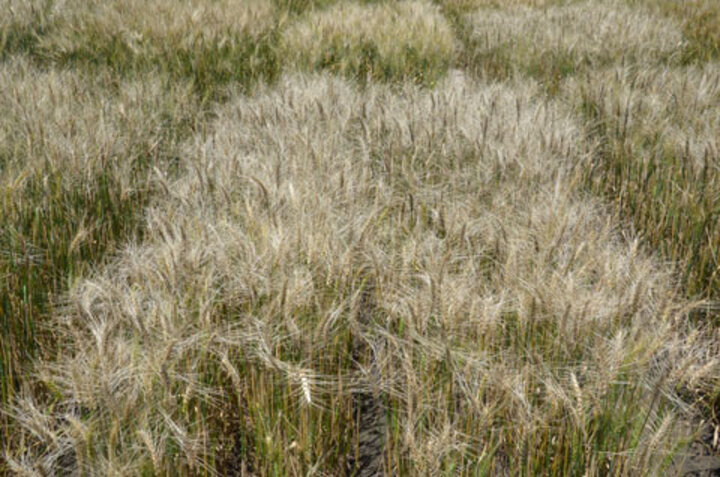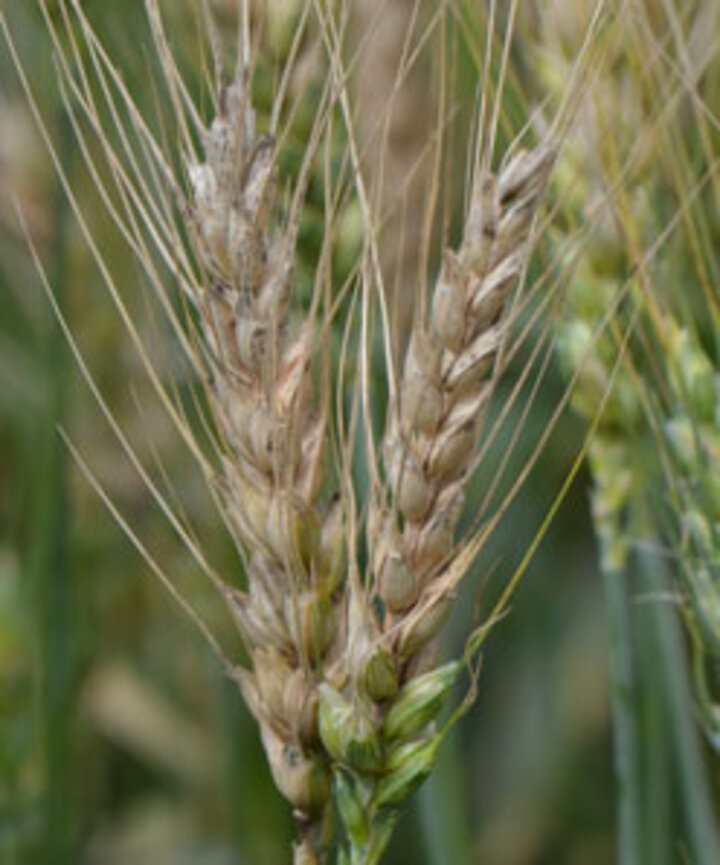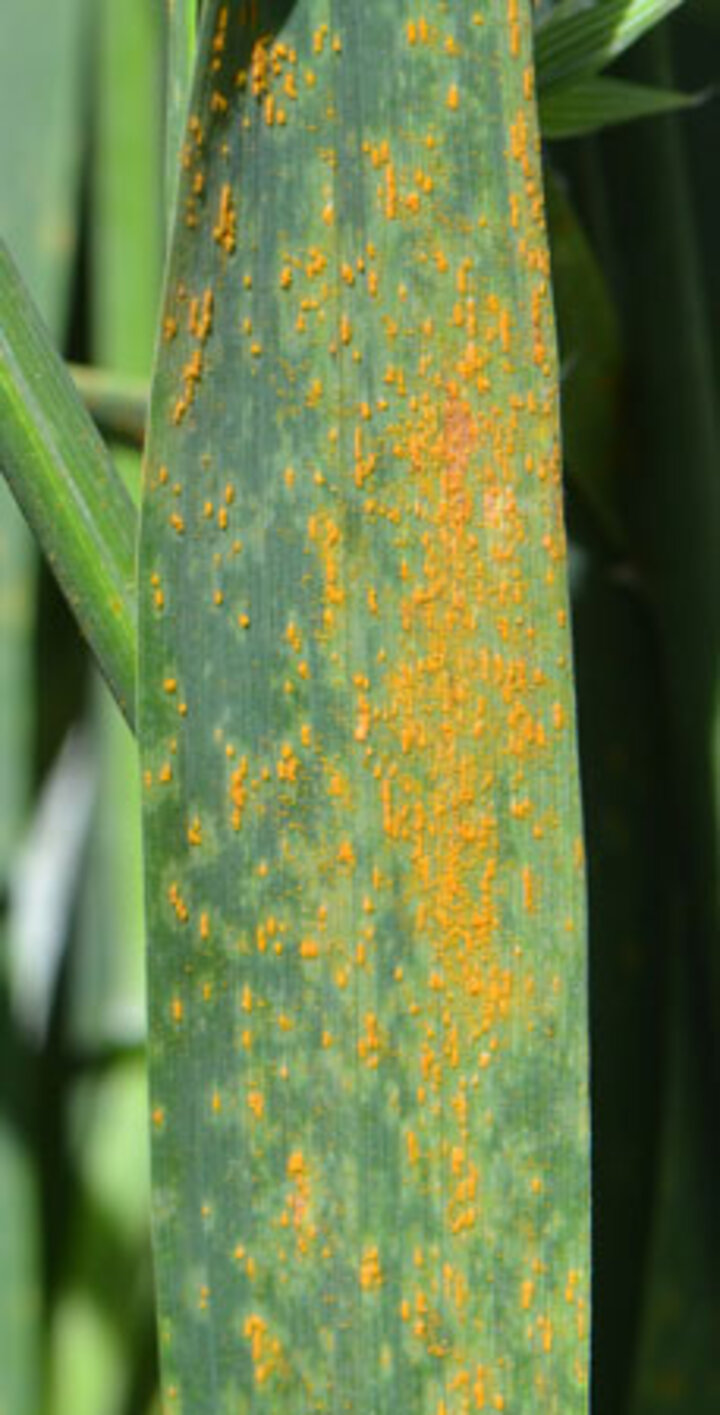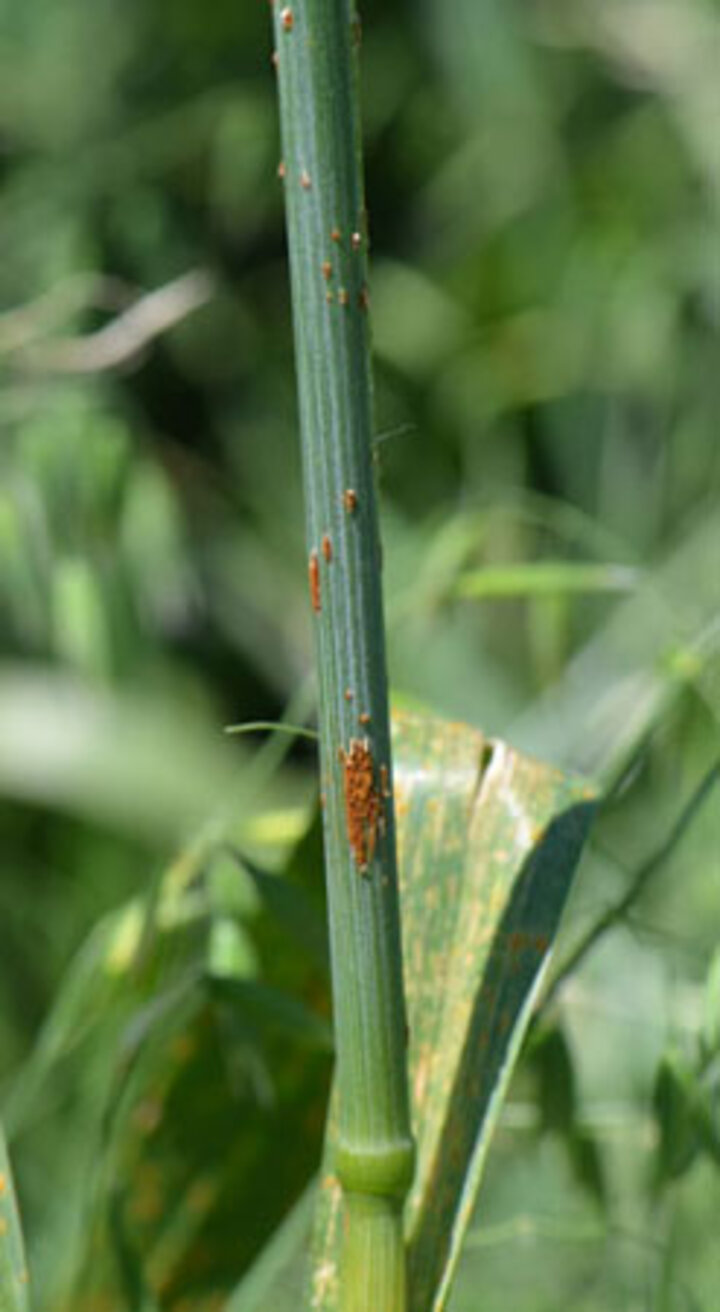

Wheat Disease Update: Scab in Eastern Nebraska


A survey of fields of wheat and other small grain cereal crops June 17-18 in Lancaster and Saline counties showed moderate to severe levels of Fusarium head blight (scab) in wheat. In research plots at the UNL Havelock Farm in Lincoln on June 17, highly susceptible wheat lines and varieties had 100% of wheat heads completely bleached by the disease (Figure 1). In a grower's wheat field in Saline County on June 18 (Figure 2), moderate to severe levels of Fusarium head blight were observed. Incidence (percentage of diseased heads) ranged from 60% to 100% in severely affected areas of the field. Severity (percentage of diseased spikelets on a head) varied from trace to 100% on some heads (Figures 3 and 4).


Other diseases observed on small grain cereal crops during the survey were crown rust on oats (Figure 5), stem rust on wheat, barley, and oats (Figure 6), and bacterial streak on wheat. These diseases were observed in fields at Havelock Farm in Lincoln.
In southern Nebraska, stripe rust development has mostly stopped because diseased leaves in fields with susceptible varieties that were not sprayed are dead and the rust has no more healthy tissue to infect. In the northern areas, especially in the Panhandle, stripe rust may still be active in some fields. Warm to hot weather in the coming days should considerably slow stripe rust development.Some common foliar diseases of wheat such as Septoria tritici blotch are not prominent in many fields this season because stripe rust killed the leaves before these diseases developed to noticeable levels.
Management
It is too late in the growing season to spray wheat fields to control fungal diseases. In the next issue of CropWatch, we will present strategies for harvesting and handling Fusarium head blight and vomitoxin (DON)-affected wheat grain.
Stephen WeguloExtension Plant Pathologist
